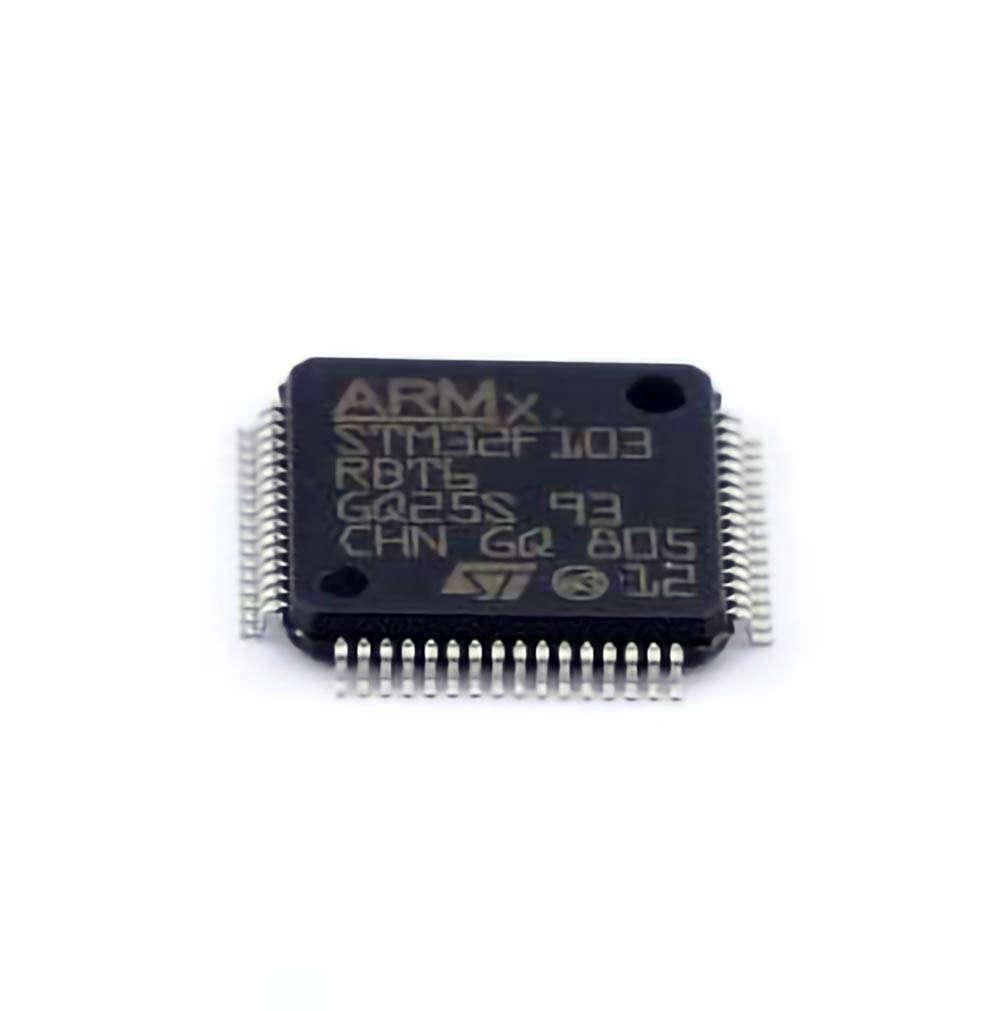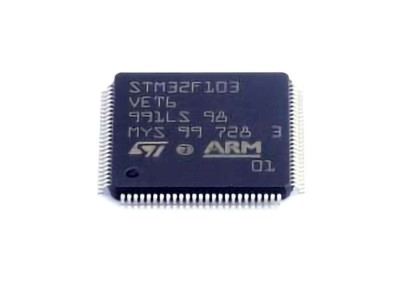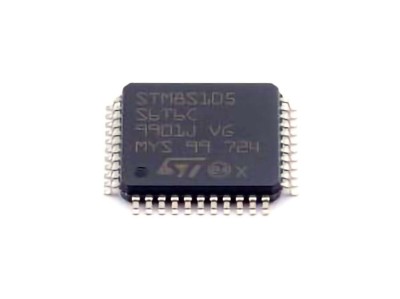
Identifying Common Issues and Troubleshooting Methods
The ST STM32F103RBT6 microcontroller, part of the STM32F1 series, is renowned for its versatility and efficiency in embedded systems, providing developers with robust performance and a wide array of features. However, like any complex piece of hardware,it is not immune to potential issues. Troubleshooting these problems can be challenging, but understanding the common faults and their causes can significantly streamline the process.
1. Power Supply Problems
One of the most common causes of issues in STM32F103 RBT6 circuits is power-related faults. The microcontroller requires a stable and sufficient voltage for proper operation, and any fluctuation or instability in the power supply can lead to erratic behavior, system crashes, or failure to boot.
Solution:
Ensure that the power supply is within the recommended voltage range (typically 2.0V to 3.6V).
Use a regulated power source and consider implementing decoupling capacitor s (e.g., 100nF ceramic capacitors) near the VDD and VSS pins to filter out noise.
Double-check the power connections for proper polarity and continuity.
Use a multimeter to measure the actual voltage at the VDD pin of the STM32F103RBT6.
2. Boot Issues
Boot failures are often seen in embedded systems using the STM32F103RBT6. This can happen if the microcontroller fails to enter the bootloader or there is an issue with the flash Memory .
Solution:
Ensure the boot pins (BOOT0 and BOOT1) are configured correctly. If BOOT0 is high during reset, the STM32F103RBT6 will attempt to enter the system bootloader.
Check the connection to the external flash memory, if applicable. A corrupted flash or faulty memory chip could prevent booting.
Use the built-in system memory (ST-Link or JTAG) to reload the firmware and check for any bootloader issues.
3. Incorrect Clock Configuration
The STM32F103RBT6 requires precise clock settings for proper operation. Incorrect configurations can cause the microcontroller to operate at the wrong speed, leading to system instability or failure to communicate with external peripherals.
Solution:
Verify that the correct external oscillator or internal PLL is configured in the microcontroller’s clock settings.
Use the STM32CubeMX tool to ensure that clock settings are correctly defined for your application.
Check the crystal oscillator and its load capacitors if an external clock source is used. Incorrect values can cause unreliable clock signals.
4. Debugging Challenges
In many cases, developers may encounter issues that are difficult to debug, especially when the microcontroller enters an unknown state or behaves unpredictably.
Solution:
Utilize the integrated debugging tools in the STM32 family, such as the Serial Wire Debug (SWD) or JTAG interface s, to monitor the program’s execution.
Use a debugger (e.g., ST-Link V2) to set breakpoints, step through the code, and observe variable values in real time.
Check the microcontroller’s reset and interrupt handling to ensure that no illegal states or watchdog timeouts are causing the system to behave unexpectedly.
5. Firmware Corruption
Firmware corruption can occur for several reasons, including power loss during flashing, faulty external memory, or improper reset conditions. A corrupted firmware can cause the STM32F103RBT6 to stop functioning entirely.
Solution:
Reflash the firmware using a reliable tool such as STM32CubeProgrammer or an ST-Link debugger.
If the system is not booting at all, use the built-in bootloader to reflash the firmware via UART or USB, depending on your setup.
Always verify the integrity of your firmware image before flashing to avoid unnecessary corruption.
6. Peripheral Communication Failures
The STM32F103RBT6 supports a variety of peripherals like UART, SPI, I2C, and CAN. However, these interfaces can sometimes fail due to improper configurations, hardware faults, or software bugs.
Solution:
Double-check the configuration of the peripheral settings (baud rate, parity, etc.) to ensure they match the expectations of the external device.
Use oscilloscope or logic analyzer probes to inspect the signal quality on the relevant communication lines (e.g., TX/RX for UART, SCK/MISO for SPI).
Implement error handling in the firmware to detect and recover from peripheral communication failures.
Advanced Troubleshooting Techniques and Optimization
7. Interrupt Handling Issues
Interrupts are a crucial aspect of embedded systems, and improper handling can lead to missed events, system lock-ups, or incorrect behavior.
Solution:
Ensure that interrupt priorities are correctly set. STM32F103RBT6 supports nested vector interrupt handling (NVIC), which allows you to manage interrupt priorities effectively.
If multiple interrupts are triggering simultaneously, use software flags or semaphores to prevent conflicts.
Check the interrupt service routines (ISRs) for any delays or blocking operations. Ensure that ISRs are as fast and efficient as possible to avoid interrupt latency.
8. Watchdog Timer Resets
The watchdog timer is designed to reset the system if it detects that the application has stopped responding. While this is a useful feature, it can also be a source of frustration if the system constantly resets due to misconfigured watchdog timers or infinite loops in the application.
Solution:
Check the configuration of the independent watchdog (IWDG) or the window watchdog (WWDG), depending on which one is in use.
If the watchdog timer is triggering resets unexpectedly, ensure that the application is regularly feeding the watchdog with the correct timing (via the IWDG/Kick function).
Debug the system to identify any code segments or infinite loops that might be causing the watchdog to reset the MCU.
9. Memory Leaks and Resource Exhaustion
Memory leaks or resource exhaustion can lead to a gradual degradation of system performance over time. The STM32F103RBT6 has limited RAM and flash memory, so it’s essential to manage these resources effectively.
Solution:
Use memory profiling tools (such as STM32CubeMX or custom firmware debugging) to monitor heap and stack usage.
Ensure that dynamic memory allocation (malloc/free) is used carefully and that no memory leaks occur.
Consider using fixed-size buffers or statically allocated memory for critical resources to avoid runtime allocation issues.
10. Firmware Optimization
Optimizing the firmware running on the STM32F103RBT6 can help improve performance and reduce the risk of issues like memory fragmentation or CPU overload.
Solution:
Use efficient algorithms and avoid complex operations in interrupt service routines.
Optimize the use of peripheral features, such as DMA (Direct Memory Access ) for efficient data transfer without burdening the CPU.
Consider reducing the clock speed of the microcontroller to save power if performance demands are low.
11. Temperature and Environmental Factors
Environmental conditions, such as extreme temperatures, humidity, or external electrical noise, can affect the performance of the STM32F103RBT6 and cause malfunctions.
Solution:
Ensure that the microcontroller is used within the specified temperature range (typically 0°C to 70°C for commercial-grade parts).
If the device is used in harsh environments, consider adding protective elements like surge suppressors, capacitors, or shields to mitigate electrical noise.
Use a thermal camera or temperature sensors to monitor the temperature of the microcontroller and its surroundings during operation.
12. Documentation and Community Support
Sometimes the best way to solve an issue is to leverage the knowledge of others. The STM32 ecosystem has a large and active developer community that can help troubleshoot problems.
Solution:
Consult the STM32F103RBT6 datasheet, reference manual, and errata sheet for any known issues or hardware limitations.
Visit forums, such as the STM32 community or Stack Overflow, to ask questions and find solutions to problems that others have encountered.
Take advantage of example projects and code snippets available on the STM32 website or GitHub to ensure you are following best practices.
Conclusion
Troubleshooting the STM32F103RBT6 requires a methodical approach and an understanding of both the hardware and software aspects of the microcontroller. By addressing common issues such as power supply problems, boot failures, and peripheral communication errors, and using advanced debugging tools and optimization techniques, developers can ensure that their projects run smoothly. With persistence and the right resources, solving problems with the STM32F103RBT6 can be a rewarding experience, leading to more reliable and efficient embedded systems.
If you’re looking for models of commonly used electronic components or more information about STM32F103RBT6 datasheets, compile all your procurement and CAD information in one place.
( Partnering with an electronic component supplier) sets your team up for success, ensuring that the design, production and procurement processes are streamlined and error-free. (Contact us) for free today.


